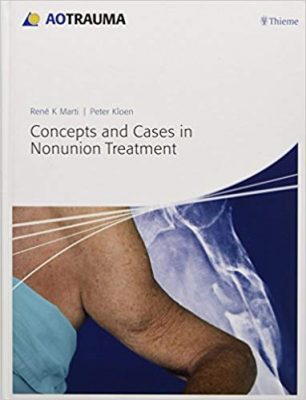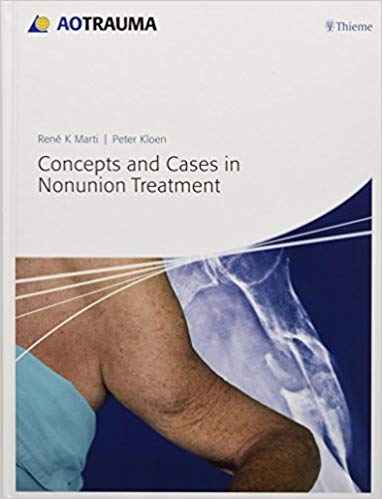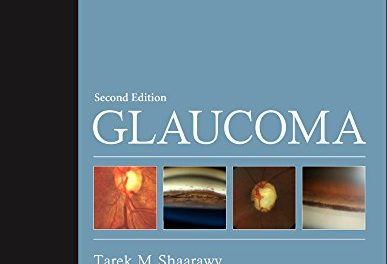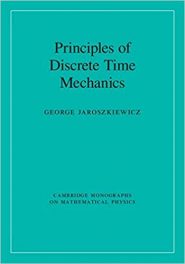 Editors: Rene K. Marti, Prof Dr med, and Peter Kloen , MD, PhD
Editors: Rene K. Marti, Prof Dr med, and Peter Kloen , MD, PhD
Publisher: Thieme – 960 pages Book Review by: Nano Khilnani
‘Nonunion’ is the layman’s term for a medical condition known as pseudarthrosis. The prefix ‘pseudo’ as most of you probably now, means ‘false’ and ‘arthrosis’ is the medical term for joint.
In order to correct the problem of pseudarthrosis, surgery is necessary. But in many cases even after surgery, this condition persists, for a variety of reasons.
The editors of this book and the authors of its chapters discuss the condition of nonunion or pseudoarthrosis and its various aspects. They also look at why, in a variety of situations, this is not totally resolved. A large number of cases are presented and examined in detail throughout this textbook
To facilitate learning and understanding by readers, this massive book is amply illustrated with a huge number (about 1,700) of graphics of various kinds. The variety includes among other types of visuals, the following: charts, data in tabular form, detailed fine-line drawings, micrographs (including micro-angiograms), photographs of surgical procedures in progress and of patients with a variety of disorders and other situations, and also radiograms, schematics, sketches, and x-rays.
Sixty specialists in orthopedics and orthopedic surgery, and other areas – limb lengthening, oral cell biology, hand surgery, microvascular surgery, radiology, spine surgery, traumatology, and upper extremity surgery – wrote the chapters of this thick book of 960 pages.
More than half. or 34 of the contributing authors in this book are from the Netherlands (24) and Switzerland (10). The other 26 writers of the chapters are from four other countries, namely the Czech Republic, Chile, Germany, and the United States.
We list the parts of this book below to give you a broad overview of its coverage and contents:
- Principles
- Evolution of Treatment of Nonunions
- Basic Science Concepts
- Nonoperative Treatment
- Bone Graft
- Infected Nonunions
- Cases
- Clavicle
- Humerus, Proximal
- Humerus, Shaft
- Humerus, Distal
- Forearm
- Pelvis / Acetabulum
- Femur, Neck
- Femur, Proximal / Intertrochanteric
- Femur, Proximal / Subtrochanteric
- Femur, Shaft
- Femur, Distal
- Tibia, Proximal
- Tibia, Shaft
- Tibia, Distal / Plion
- Ankle
- Foot
In his Foreword to this book, Professor Norbert P. Haas, Dr med, president of the AO Foundation between 2010 and 2012, writes that people have been going to doctors to report about occurrences of pseudoarthrosis for as long as they have been reporting about their bone fractures.
But in spite of the following advances, prostheses, and practices in today’s world, pseudoarthrosis is a persistent condition that cannot always be avoided:
State-of-the art operating techniques
Best quality implants
Conservative treatment methods carried out correctly and according to standard practices
Dr. Haas points out: “Intensive fundamental research may have equipped us with a great deal of detailed knowledge and expertise regarding the development of pseudoarthrosis, but we are not yet able to predict its onset or reliably prevent it from developing. How to treat pseudoarthrosis correctly and successfully therefore still presents a challenge, even today.”
But he recommends that a correct assessment and accurate classification of pseudoarthrosis be the first important step to be taken by the physician. He informs us: “the works of Weber and Cech continue to set the standard in this regard and are extremely helpful.”
He goes further to assert: “There can be no doubt that the time Rene K. Marti spent with Prof. Bernhard Weber in St. Gallen inspired and compelled him to devote himself with particular intensity to pseudoarthroosis and its successful treatment throughout his working life. We have good reason to thank him for compiling his personal experiences and techniques – as well as his setbacks – into a book as he reached the end of his professional career, thus passing on his knowledge to future generations of orthopedic and trauma surgeons.”
When the editors Rene K. Marti and Peter Kloen were putting together the materials for this book and developing it, they were guided by the central principle of correct analysis and assessment of pseudoarthrosis, Dr. Hass informs us. He writes: “If biological and mechanical reasons for the onset of pseudoarthrosis can be detected, then these must be considered when planning the treatment. Only after a precise analysis has been carried out can biomechanically appropriate steps can be taken, whereby tried-and tested implants are used very effectively in combination with the right technique for the case in question.”
This is a pioneering work on pseudoarthrosis by its editors and authors, and it is certainly an important contribution to the growing knowledge on it in addition to the previous work of others. While further research is needed to understand it thoroughly and to treat it effectively every time, this is a good beginning.
Editors: Rene K. Marti, Prof Dr med is retired Chief of the Orthopedic Department at the University of Amsterdam in Amsterdam, the Netherlands.
Peter Kloen , MD, PhD is Director of Orthopedic Trauma in the Department of Orthopedic Surgery at the University of Amsterdam in Amsterdam, the Netherlands.







